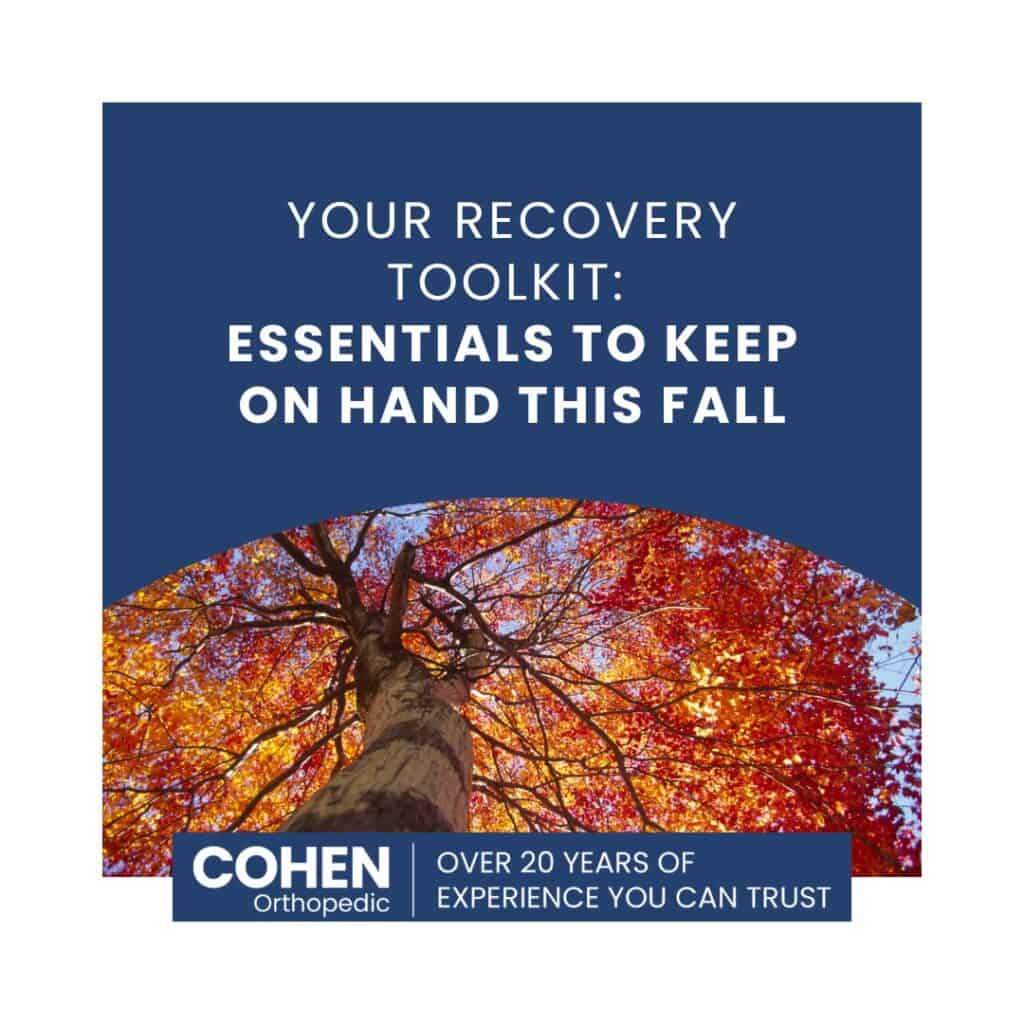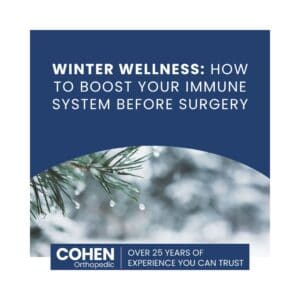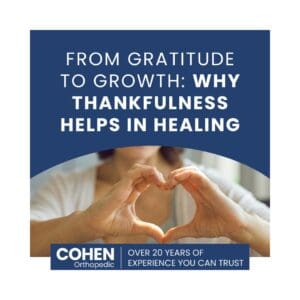Your Recovery Toolkit – Essentials to Keep on Hand this Fall

Recovering from joint surgery—or preparing for one—can feel overwhelming. But the good news is this: with the right tools, a little planning, and a whole lot of support, you can make this season of healing smoother and more comfortable.
To help, we’ve put together your Fall Recovery Toolkit—everything we recommend keeping close by to stay safe, supported, and on track this season.
🍂 1. Cold Therapy: Your Best Friend After Surgery
Swelling is a normal part of recovery, but managing it can make a world of difference in your comfort and mobility.
What to keep on hand:
- Reusable ice packs or a cold therapy machine
- A thin towel or cloth to protect your skin
- A timer to remind you when to apply and when to rest
Cold therapy helps reduce pain and inflammation—without the need for extra medication.
🍂 2. Pain Management the Smart Way
Pain is temporary, but controlling it early makes recovery smoother.
Pack your pain management essentials:
- Prescribed medications (taken exactly as directed)
- Over-the-counter options approved by your doctor
- A daily medication tracker or pill organizer
- Alternative comfort options like ice, elevation, and guided breathing
Medication is a tool—not a weakness. When used responsibly, it helps your body move, heal, and rest.
🍂 3. Comfort at Home: Where Healing Happens Most
Small changes make a big difference in safety and independence.
Create a recovery-friendly space with:
- A sturdy chair with arms and a firm seat
- Slip-resistant rugs and clutter-free walkways
- A grabber tool or reacher so you don’t need to bend
- Elevated toilet seat or shower chair if recommended
- Cozy essentials—blankets, loose clothing, and warm socks
Fall is the season of comfort, and your home should feel like a soft place to land.
🍂 4. Mobility Must-Haves
You won’t be staying in bed for long—and that’s a good thing. Movement keeps blood flowing and helps prevent stiffness.
Helpful tools include:
- Walker, cane, or crutches (adjusted to your height)
- Rubber tips on all mobility aids to prevent slipping
- Supportive footwear with good grip
- A small bag or walker pouch for carrying phones, snacks, or medications
Moving may feel intimidating at first, but with the right support, each step gets easier.
🍂 5. Nourish Your Healing Body
Your body is working hard to recover. Give it the fuel it deserves.
Stock up on:
- High-protein foods (eggs, yogurt, lean meats, beans)
- Hydration—water, herbal tea, electrolyte drinks
- Fiber-rich foods or stool softeners if needed (pain meds can slow digestion)
- Easy-to-reach snacks and prepped meals
A warm bowl of soup, a protein smoothie, or a cup of tea can be medicine in its own way.
🍂 6. Your Recovery Support Team
Healing isn’t meant to be done alone. It’s okay to ask for help.
Keep these contacts nearby:
- Your surgeon’s office and after-hours line
- Physical therapist
- Family, friends, or caregivers who can help with meals, rides, or moral support
- A journal or app to track appointments, questions, and progress
Your recovery is a team effort—and we’re honored to be part of that team.
🍂 7. Mindset Matters: A Few Extras for the Soul
Fall can be a season of rest and reflection. Don’t forget to take care of your emotional well-being, too.
Consider adding:
- A good book, puzzle, or journal
- Calming music or podcasts
- Gentle stretches or mindfulness exercises (as approved by your doctor)
- A daily gratitude note—even small wins count
Healing isn’t just physical. Taking care of your mind helps your body heal better.
You’re Not Alone on This Journey
Recovery takes patience, commitment, and a little preparation—but you don’t have to do it perfectly. You just have to keep going, one step at a time.
If you have questions, concerns, or just need reassurance, we’re here. Always.










